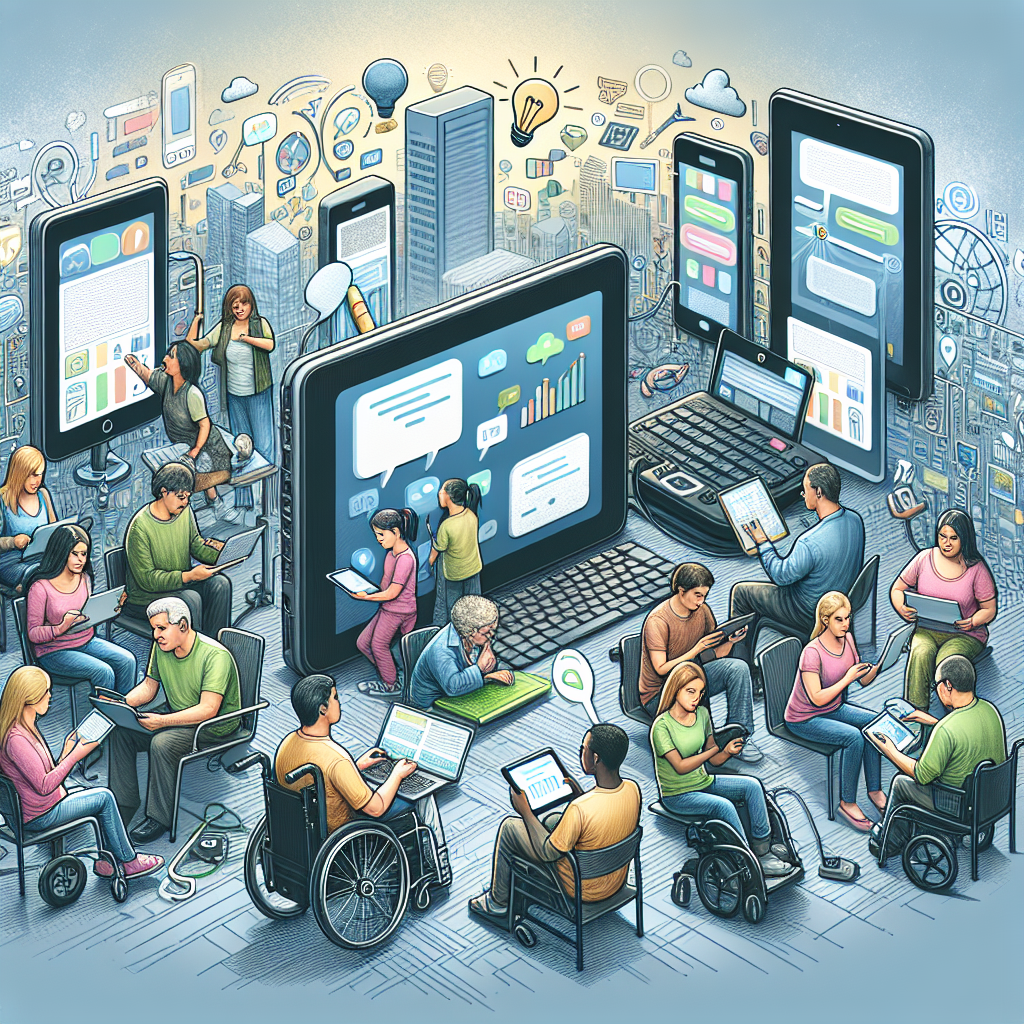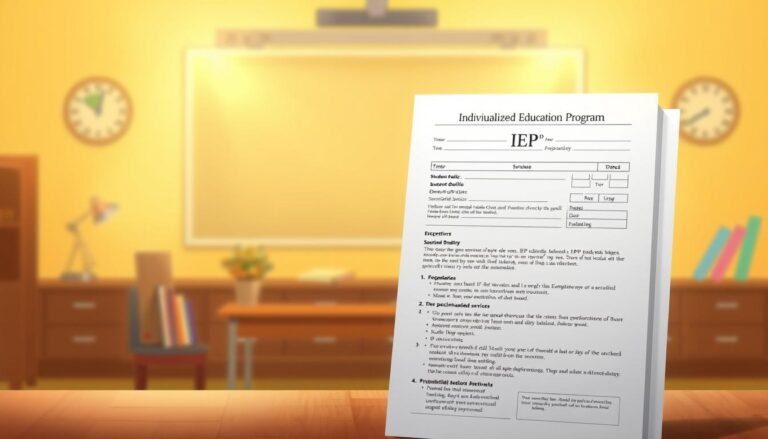
The Ultimate Guide to The Role of Technology in Supporting Language-Based Learning Disabilities: Innovations and Resources
Introduction
In today’s fast-paced digital world, the intersection of education and technology has sparked unprecedented innovations, offering extraordinary support for students with language-based learning disabilities (LBLD). Imagine a child struggling to decode a simple sentence suddenly finding clarity through the flick of a switch or the press of a button. The role of technology in supporting language-based learning disabilities is not merely a convenience; it’s essential for fostering both independence and academic success.
By exploring the unique innovations and resources that specifically target these learning challenges, we can equip educators and families with tools to help every learner thrive.
Understanding Language-Based Learning Disabilities
What Are Language-Based Learning Disabilities?
Language-based learning disabilities encompass a range of challenges that affect language processing, impacting reading, writing, and sometimes oral communication. Conditions like dyslexia, dysgraphia, and auditory processing disorders are common among individuals with LBLD. Each of these challenges can create barriers in academic and social settings.
The Impact of Language-Based Learning Disabilities
According to the International Dyslexia Association, 20% of the population may exhibit symptoms of dyslexia, affecting not only reading skills but also self-esteem and confidence. Moreover, students with LBLD often require tailored educational approaches, which can be significantly augmented through the strategic use of technology.
The Role of Technology in Supporting Language-Based Learning Disabilities: Innovations and Resources
Assistive Technologies
1. Text-to-Speech Software
Text-to-speech (TTS) has revolutionized the way students with LBLD engage with written content. This technology reads aloud text from books, webpages, or documents, allowing students to process information auditorily. Tools like Kurzweil 3000 and Natural Reader are excellent examples that bridge the gap between reading difficulties and comprehension.
Case Study: Kurzweil 3000 in Action
A middle school student named Jake struggled with dyslexia. After implementing Kurzweil 3000, Jake reported a dramatic increase in his reading comprehension levels—up from 50% to 85%—enhancing both his academic performance and confidence in class discussions.
2. Speech Recognition Software
Speech recognition software offers a compelling solution for students grappling with writing tasks. Programs such as Dragon Naturally Speaking allow users to dictate content, automatically translating spoken words into written text. This removes the barrier of writing mechanics, enabling students to express their ideas freely.
Case Study: A Transformative Tool for Anna
Anna, a fifth-grader with dysgraphia, found it challenging to translate her thoughts into written form. Upon using Dragon Naturally Speaking, Anna produced essays with clarity and confidence, leading to notable improvements in her grades and self-esteem.
Digital Learning Platforms
3. Interactive Tools
Platforms like Seesaw and Flipgrid allow students to create multimedia presentations, giving them various ways to showcase what they’ve learned. Through these platforms, students with LBLD can explore visual and auditory means of expression, enhancing comprehension and retention.
Case Study: Project-Based Learning with Seesaw
In a classroom using Seesaw, students collaboratively worked on a project about ecosystems. Sarah, who struggles with reading, utilized visual aids and recorded her explanations. Her peers engaged with her project, providing the affirmation that nurtured her growth.
4. Language Learning Apps
Apps such as Duolingo and Speech Blubs provide engaging, gamified learning experiences for students with LBLD. These applications offer personalized feedback and adapt to individual learning styles, which is crucial for sustained engagement.
Case Study: Enhancing Vocabulary with Duolingo
Tom, a third-grader with an auditory processing disorder, began using Duolingo to build vocabulary skills. He was able to witness firsthand how his language skills were evolving, motivating him to practice consistently. His parents noted improvements in his speech clarity and confidence in participating in conversations.
Inclusive Educational Resources
5. Specialized Curriculum Software
Programs like Learning Ally and Bookshare provide access to audiobooks specifically designed for students with reading challenges. These resources help level the playing field by giving students access to the same materials as their peers while considering their learning differences.
Case Study: Bridging the Gap with Learning Ally
A special education teacher integrated Learning Ally into her classroom, providing struggling readers with audiobooks of their assigned texts. Hannah, a student with dyslexia, was able to follow along in her text while listening, which advanced her comprehension and enjoyment of reading.
6. Online Professional Development for Educators
Web-based platforms such as EdWeb and Learning Forward offer training and resources for educators on the latest technologies that support LBLD. This knowledge empowers teachers to effectively integrate technology into their curriculum, benefiting their students.
Case Study: Teacher Training for Efficacy
Ms. Thompson, an elementary teacher, participated in an online seminar about assistive technology for LBLD students. After the training, she implemented various tools in her classroom, leading to notable improvements in student engagement and academic performance, creating a more inclusive environment.
Collaboration and Communication Platforms
7. Online Community Forums
Platforms like Reddit and Facebook groups provide avenues for parents, educators, and individuals with LBLD to share experiences and resources. These communities foster support and connection, enriching the journey through shared strategies.
Graphical Insight: Impact of Technology on Academic Performance
| Technology | Average Improvement in Academic Performance | Learner Engagement |
|---|---|---|
| Text-to-Speech | 30% increase | High |
| Speech Recognition | 40% increase | Very High |
| Interactive Tools | 35% increase | High |
| Language Learning Apps | 25% increase | High |
Emotional and Social Support Through Technology
8. Gamification
Gamification in learning apps not only enhances academic performance but also fosters social skills. For example, Prodigy uses a game-based learning format to help students practice math skills while engaging with peers.
Case Study: Ben’s Engagement Through Prodigy
Ben, who previously struggled with math due to a language-based learning disability, showed increased participation after using Prodigy. The interactive nature of the app helped him build confidence and improve his numerical understanding, leading to successful collaborative gameplay with classmates.
Conclusion
The role of technology in supporting language-based learning disabilities cannot be overstated. Each of the innovations and resources discussed herein demonstrates how the digital landscape can cultivate meaningful connections between learners and their educational journeys. By leveraging assistive technologies, inclusive educational resources, and collaborative platforms, we can create an environment that promotes access and equality.
Empowerment and Action
As we look to the future, it’s essential for educators, parents, and stakeholders to remain vigilant, proactive, and informed about these tools. By embracing the role of technology in supporting language-based learning disabilities, we’re not just providing resources; we’re paving the way for bright futures for all learners.
FAQs
1. What are the common types of language-based learning disabilities?
Common types include dyslexia, dysgraphia, and auditory processing disorders.
2. How does technology improve reading skills for students with LBLD?
Technology like text-to-speech software can read aloud text, helping improve understanding and fluency.
3. Are speech recognition tools effective for all ages?
Yes, speech recognition tools can be beneficial for students of various ages struggling with writing tasks.
4. How can teachers effectively integrate technology in the classroom?
Educators can attend professional development workshops and use platforms like Learning Ally to learn about appropriate tools.
5. Are there any costs associated with these technologies?
While some tools require subscriptions, many programs and apps also offer free versions that provide ample support.
6. How do I advocate for these tools in my child’s school?
Open a dialogue with teachers and administrators about the importance of technology in supporting LBLD, citing specific tools and studies that demonstrate their effectiveness.
In conclusion, leveraging technology as a resource for supporting language-based learning disabilities not only aligns with modern educational practices, but it creates opportunities for every learner to reach their full potential. The innovations outlined here are more than mere tools; they are the stepping stones toward a more inclusive future in education.
















